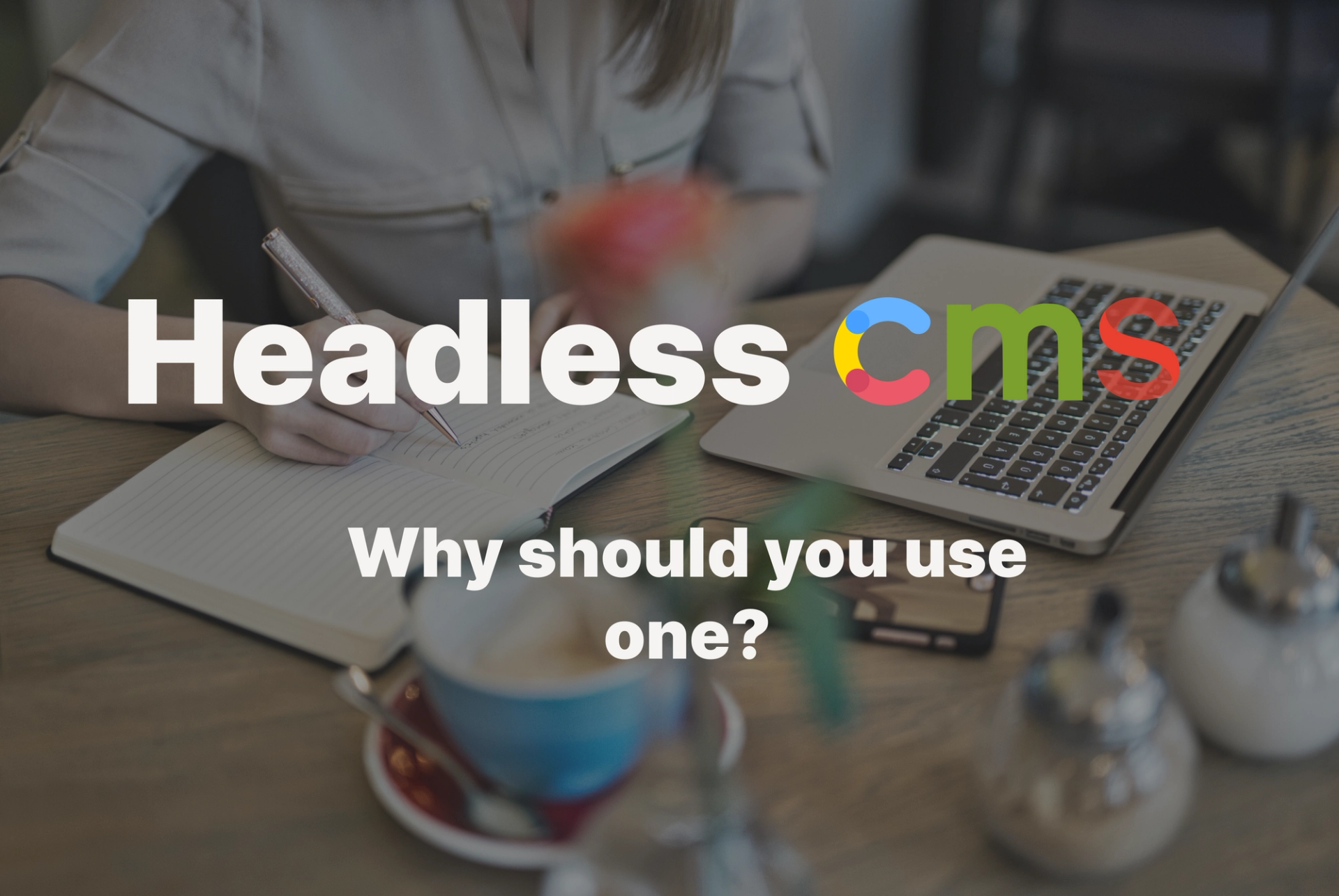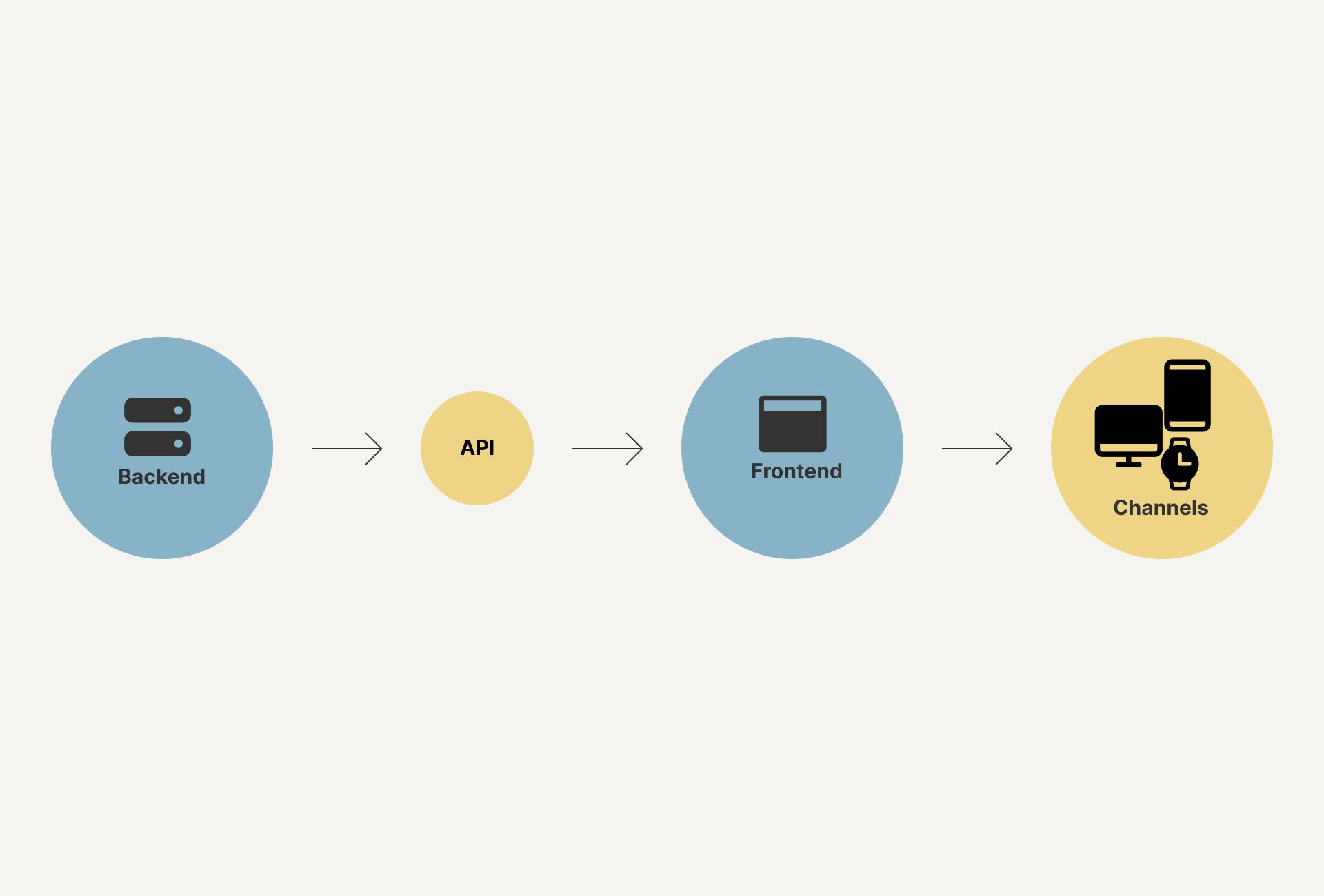What is a Headless CMS and why should you use one?

Jake Gerding
April 27, 2023

As more and more businesses are going digital, the need for content management systems (CMS) is increasing rapidly. CMS platforms have become essential for creating, managing, and publishing digital content. The world of content management has undergone a significant shift in recent years with the advent of headless CMSs. In the past, traditional CMSs were widely used for managing website content, but now headless CMSs are gaining popularity as traditional CMS platforms have some limitations when it comes to flexibility and scalability. In this blog post, we will discuss what a CMS is, what a headless CMS is, and when you should use headless CMS over traditional. We will also look at the pros and cons of using both types.
What is a CMS used for?
A content management system (CMS) is a software application that allows users to create, manage, and publish digital content, such as web pages, blog posts, and images. A traditional CMS includes a front end and a back end. The traditional CMS platforms are monolithic, where the front end and the back end are tightly coupled, meaning that the same technology is used for both. The front end, which is responsible for the presentation layer, is tightly integrated with the back end, which handles content storage and management. This tight coupling makes traditional CMS platforms less flexible, which can hinder the development of more complex and dynamic applications.

What is a Headless CMS?
A headless CMS is a content management system where the front end and back end are decoupled, meaning they are not tightly integrated. This means that the front end is separated from the back end, allowing for greater flexibility and scalability. In a headless CMS, content is created and managed in the back end, while the front end is responsible for displaying the content. This separation allows for more customization in the front end, which can lead to a better user experience for customers.
A headless CMS is designed to provide content via an API (Application Programming Interface). A headless CMS focuses only on content creation and management, leaving the presentation to the front-end developers. This means that the same content can be used across multiple channels, such as websites, mobile apps, and IoT devices, without having to maintain content in multiple systems.

Why Use a Headless CMS?
There are several reasons why you should use a headless CMS over a traditional CMS. One of the main benefits of using a headless CMS is the flexibility it provides. A headless CMS allows you to use the same content across multiple channels, making it easier to manage content. Headless CMSs generally cost more upfront compared to traditional CMSs, but there are savings to the content team. Another advantage is that it allows front-end developers to use the best technology to build the presentation layer, providing greater flexibility and speed. This means that businesses can choose the best technology for their specific needs, instead of being limited by the CMS platform.
Headless CMSs are becoming an increasingly popular choice for businesses looking for a flexible and scalable content management solution.
By separating the front end and back end, businesses can choose the best technology for their needs, and easily update the front end without affecting the back end. Additionally, since the front end is decoupled, businesses can easily update the front end without affecting the back end, which can reduce development time and costs. Another advantage of a headless CMS is its scalability. Businesses can easily add new channels and devices without having to worry about how the content will be displayed. A headless CMS makes it easier to create content once and publish it across multiple channels, which can save time and resources as well. If you're considering a CMS platform for your business, a headless CMS is worth exploring. However, there are pros and cons to both approaches that are important to consider.
Pros and Cons of Traditional CMS
One of the main advantages of a traditional CMS is that it includes a front end, making it easier to manage the entire website in one place. Traditional CMSs are also easier to set up for a team with little to no development resources, as they do not need to know how to code or use an API. However, traditional CMSs can be limiting when it comes to customization, as teams are confined to the options available in the CMS they chose. Additionally, it can be challenging to scale a traditional CMS due to its monolithic architecture.
Pros and Cons of Headless CMS
The main advantage of a headless CMS is that it provides greater flexibility and scalability. It is decoupled from the front end, allowing for easier customization and the ability to use multiple frontends. It is also easier to scale as the back end can be separated from the front end. Using a headless CMS requires upfront technical expertise and may be more challenging for non-technical teams to get started with. However, Headless CMSs are more customizable than traditional ones meaning developers can make it super easy to use and manage content.
Conclusion
Headless CMSs are becoming an increasingly popular choice for businesses looking for a flexible and scalable content management solution. By separating the front end and back end, businesses can choose the best technology for their needs, and easily update the front end without affecting the back end. This offers many benefits over a traditional CMS, such as greater flexibility and scalability. Additionally, a headless CMS makes it easier to create content once and publish it across multiple channels, which can save time and resources. While a traditional CMS may be faster and easier to set up, it comes at a cost. As the business scales and grows, a headless CMS offers a more efficient and customizable solution for managing digital content. Ultimately, a business’ choice between a traditional CMS and a headless CMS will depend on their team’s specific needs and technical expertise.